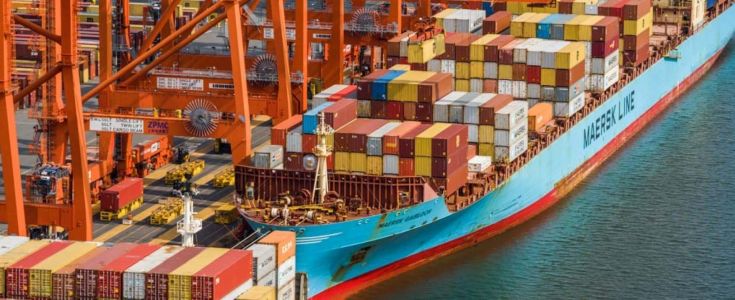 We are now in day 2 of the first International Longshoremen’s Association (ILA) strike in almost 50 years. The ILA represents 45,000 dockworkers at 36 ports from Maine to Texas on the East and Gulf coasts of the United States. The strike is over wages and the use of automation on the docks.
We are now in day 2 of the first International Longshoremen’s Association (ILA) strike in almost 50 years. The ILA represents 45,000 dockworkers at 36 ports from Maine to Texas on the East and Gulf coasts of the United States. The strike is over wages and the use of automation on the docks.
The two sides are attempting to negotiate a six-year master contract between ILA port workers employed in container and roll-on/roll-off operations, and the US Maritime Alliance, known as USMX, representing shipping firms, port associations, and marine terminal operators.
More than a third of US exports and imports could be affected by the strike, hitting the nation’s economic growth to the tune of at least $4.5bn each week of the strike, according to Grace Zemmer, an associate US economist at Oxford Economics, though others have estimated the economic hit could be higher, according to the BBC.
Labor actions have a long history in the maritime trades. The first recorded use of the word “strike” to describe a labor protest dates to April of 1768 when sailors in the Port of Sunderland in Great Britain announced that they would “strike the topsails” of merchant ships to prevent them from sailing unless wages were increased. The ship owners subsequently agreed to their demands.
In May, 1768 sailors on ships in the Thames followed their example and struck their topsails. The sailors petitioned Parliament and the Lord Mayor for a wage increase. By May 11, fourteen thousand sailors, dock workers, water-men, and coal-heavers marched on Westminster. Soon, all trade on the Thames had been brought to a standstill.
While the term “strike,” describing a labor stoppage may date to 1768, Jacobin.com notes that this was not the first time maritime workers collectively withdrew their labor in protest.
Indeed, prior to the London Strikes of 1768, keelmen (who worked the “keels,” or boats that carried coal from shore to ship) of the Tyne and Wear in northeast England had so effectively used collective agitation since the mid-seventeenth century that they were, as John Stevenson notes, regarded as “among the first trade to be organized in a primitive form of trade union.” In northwest England in December 1762, sailors in Liverpool also stopped work to demand a wage increase.
